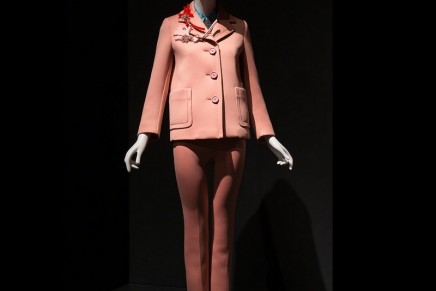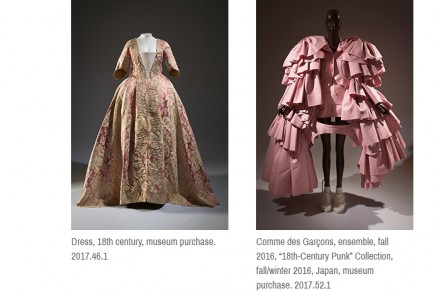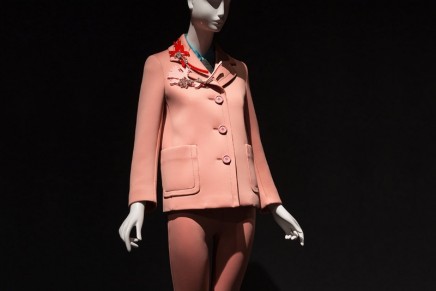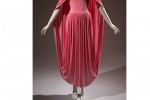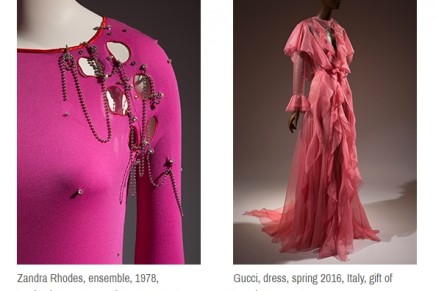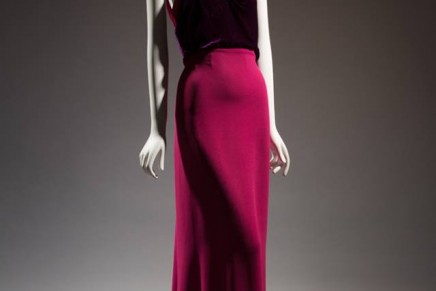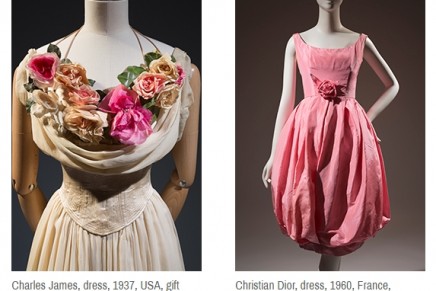The Museum at FIT (the Fashion Institute of Technology) in New York, regarded as one of the most important museums in the world, hosts Pink: the History of a Punk, Pretty, Powerful Colour, an exhibition exploring the changeable meaning of the colour pink over the last three centuries.
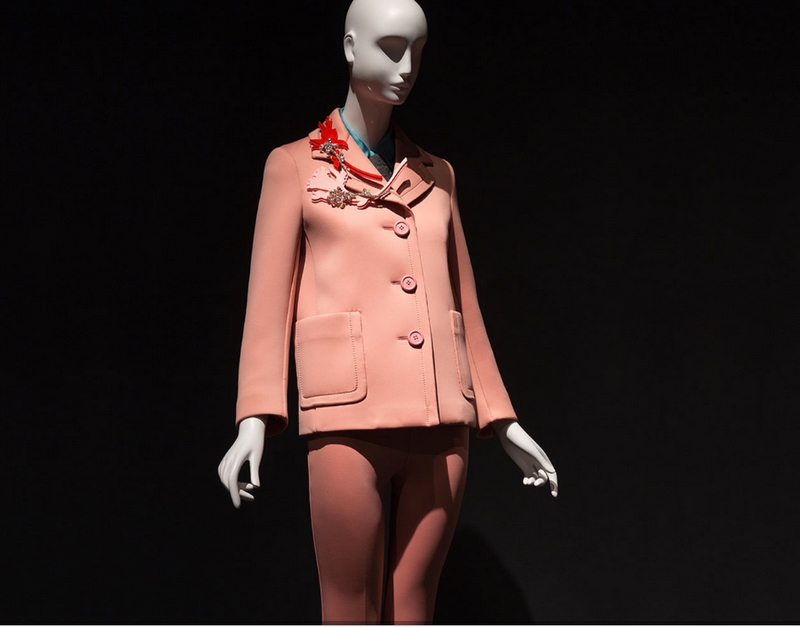
Prada mostra pink. Prada look (#41) from the Women’s collection Fall/Winter 2015. photo: www.fitnyc.edu and prada group
In its two sections (one chronological, the other thematic) the show analyses the symbolic evolution of shades of pink, trying to go beyond the stereotypes that tie pink to the feminine sphere and blue to the masculine.
Pink: The History of a Punk, Pretty, Powerful Color is organized by the museum’s director and chief curator, Dr. Valerie Steele. Pink features approximately 80 ensembles from the 18th century to the present, with examples by designers and brands such as Elsa Schiaparelli, Christian Dior, Yves Saint Laurent, Alessandro Michele of Gucci, Jeremy Scott of Moschino, and Rei Kawakubo of Comme des Garçons. The exhibition will be accompanied by a book published by Thames & Hudson and a free symposium on October 19, 2018, that will be livestreamed.
The stereotype of pink for girls and blue for boys only really gained traction in the United States in the mid-20th century, and the symbolism of pink has varied greatly across world history. By placing men’s, women’s, and children’s pink clothing from both Western and non-Western cultures — including India, Africa, Mexico, and Japan — in a historical context, Pink: The History of a Punk, Pretty, Powerful Color corrects popular misconceptions, encourages viewers to question clichés and received opinion, and demonstrates that “It is society that ‘makes’ color, defines it, gives it meaning” — to quote the great color historian Michel Pastoureau.
Prada, chosen as the voice of international fashion, presents its vision of this shade in a look (#41) from the Women’s collection Fall/Winter 2015.
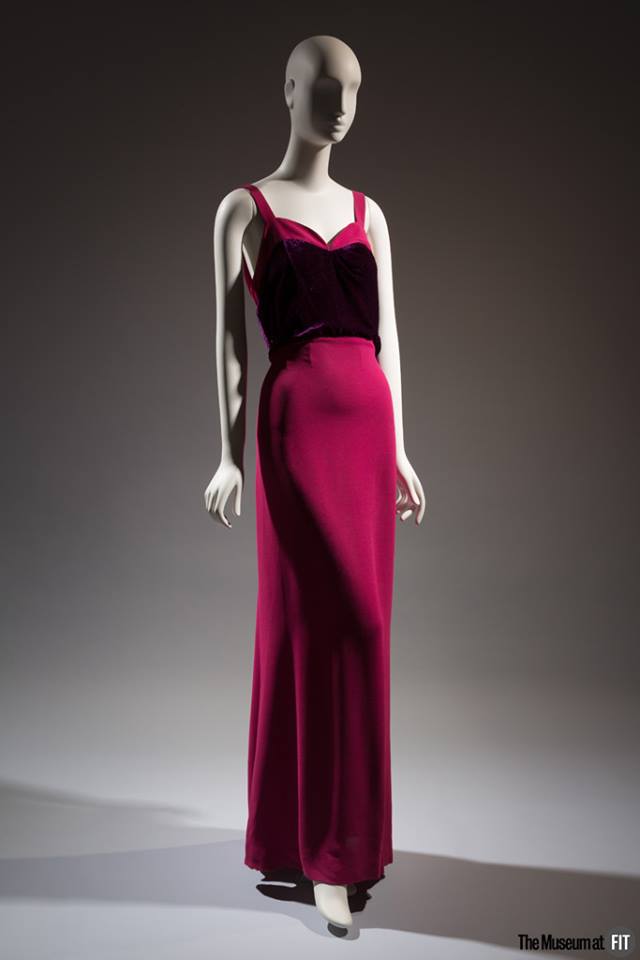
Shocking Pink Week: In the late 1930s, Chanel’s great rival, Elsa Schiaparelli, popularized an intense magenta-infused pink that she named Shocking Pink. photo: fitnyc.edu/
From 7th September 2018 to 5th January 2019.
The exhibition places pink in a global context, exploring how the color has been used in non-Western cultures. In India, for example, pink has long been worn by both men and women, while in Mexico the color Rosa Mexicano is associated with national identity. Western designers have drawn on these associations; as Diana Vreeland once said, “Pink is the navy blue of India.” Schiaparelli’s Shocking Pink was explicitly associated, in her mind, with Asia and Latin America.
In the center of the gallery is a grouping of platforms, “Rose/Eros” and “Pink: The Exposed Color,” exploring the erotic connotations of pink, which are both significant and overdetermined. Among the reasons why pink is widely regarded as an erotic color are the pinky-beige of Caucasian skin, which has led to the idea that pink is associated with nudity. Added to this are the fact that certain eroticized zones of the body such as the mouth, genitals, and nipples are known as “pink parts”; the fact that flowers, long associated with feminine beauty, are the sex organs of plants; and that pink-colored cosmetics are used to simulate blushing. Lingerie, corsets, and evening gowns, often produced in shades of pink, are featured in this section.
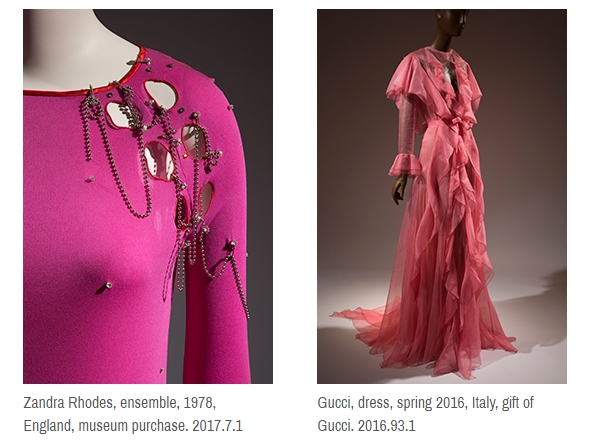
Pink – the History of a Punk, Pretty, Powerful Colour at The Museum at the Fashion Institute of Technology; photos: fitnyc.edu/
Pink has played a notable role in both political protests and popular music associated with rebellious youth. The transgressive role of pink is emphasized across several platforms featuring both men’s and women’s clothes, ranging from vernacular garments to avant-garde high fashion. Featured items include pink pussy hats, and looks associated with music genres ranging from punk to hip-hop.
The second gallery expands audience perspectives on pink and shows how contemporary designers are increasingly challenging traditional ideas about sweet, pink femininity. Rei Kawakubo, the radical designer behind Comme des Garçons, has been especially influential with collections ranging from “Biker/Ballerina” to “18th-Century Punk.” Even the house of Valentino has produced T-shirts asserting that “Pink Is Punk.”
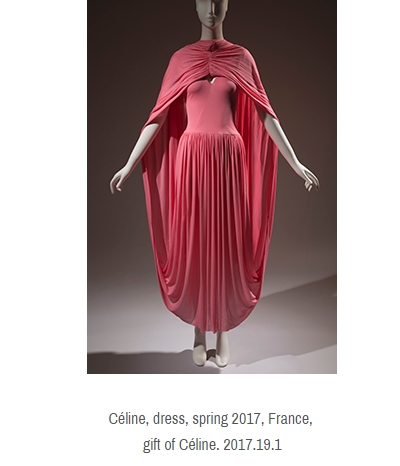
Pink – the History of a Punk, Pretty, Powerful Colour at The Museum at the Fashion Institute of Technology; photos: fitnyc.edu/
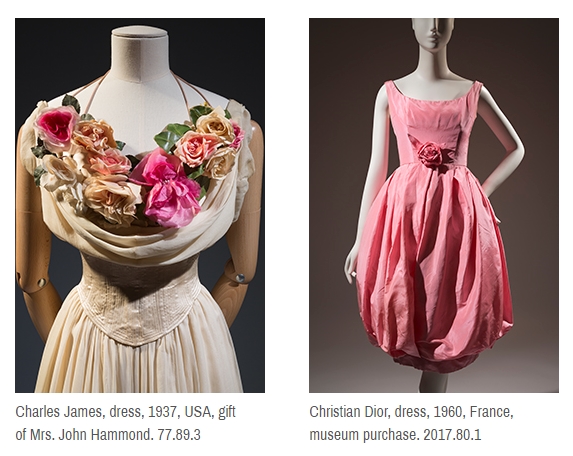
Pink – the History of a Punk, Pretty, Powerful Colour at The Museum at the Fashion Institute of Technology; photos: fitnyc.edu/
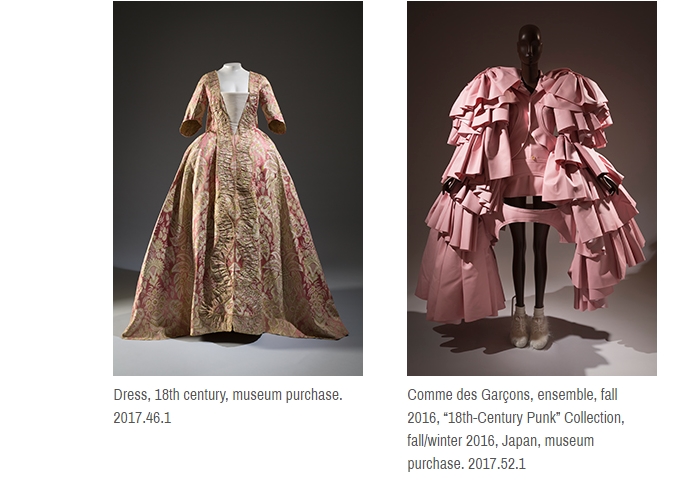
Pink – the History of a Punk, Pretty, Powerful Colour at The Museum at the Fashion Institute of Technology; photos: fitnyc.edu/
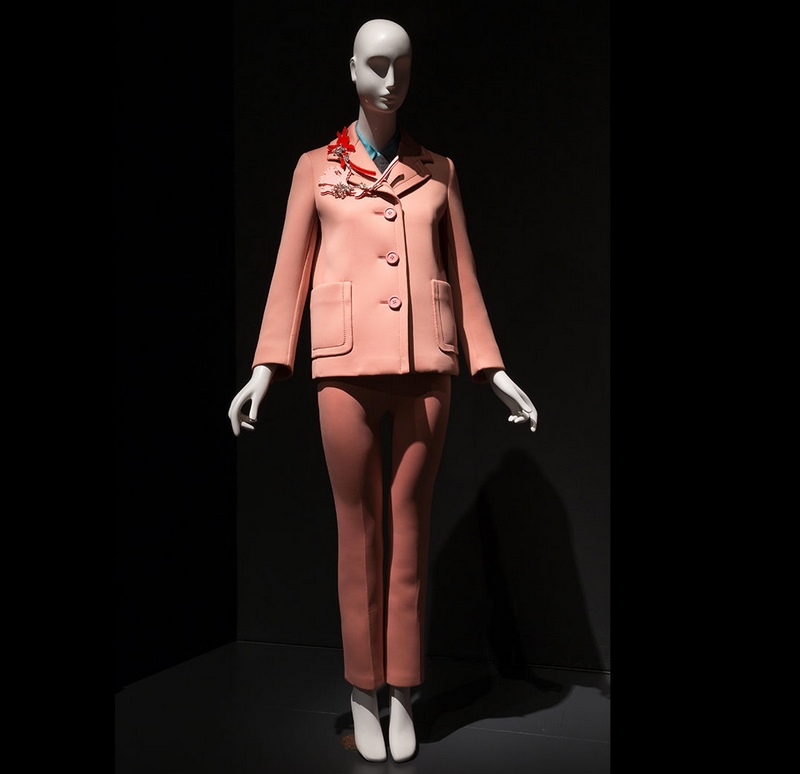
Prada Pink version; Pink – the History of a Punk, Pretty, Powerful Colour at The Museum at the Fashion Institute of Technology; photos: fitnyc.edu/ and prada group

